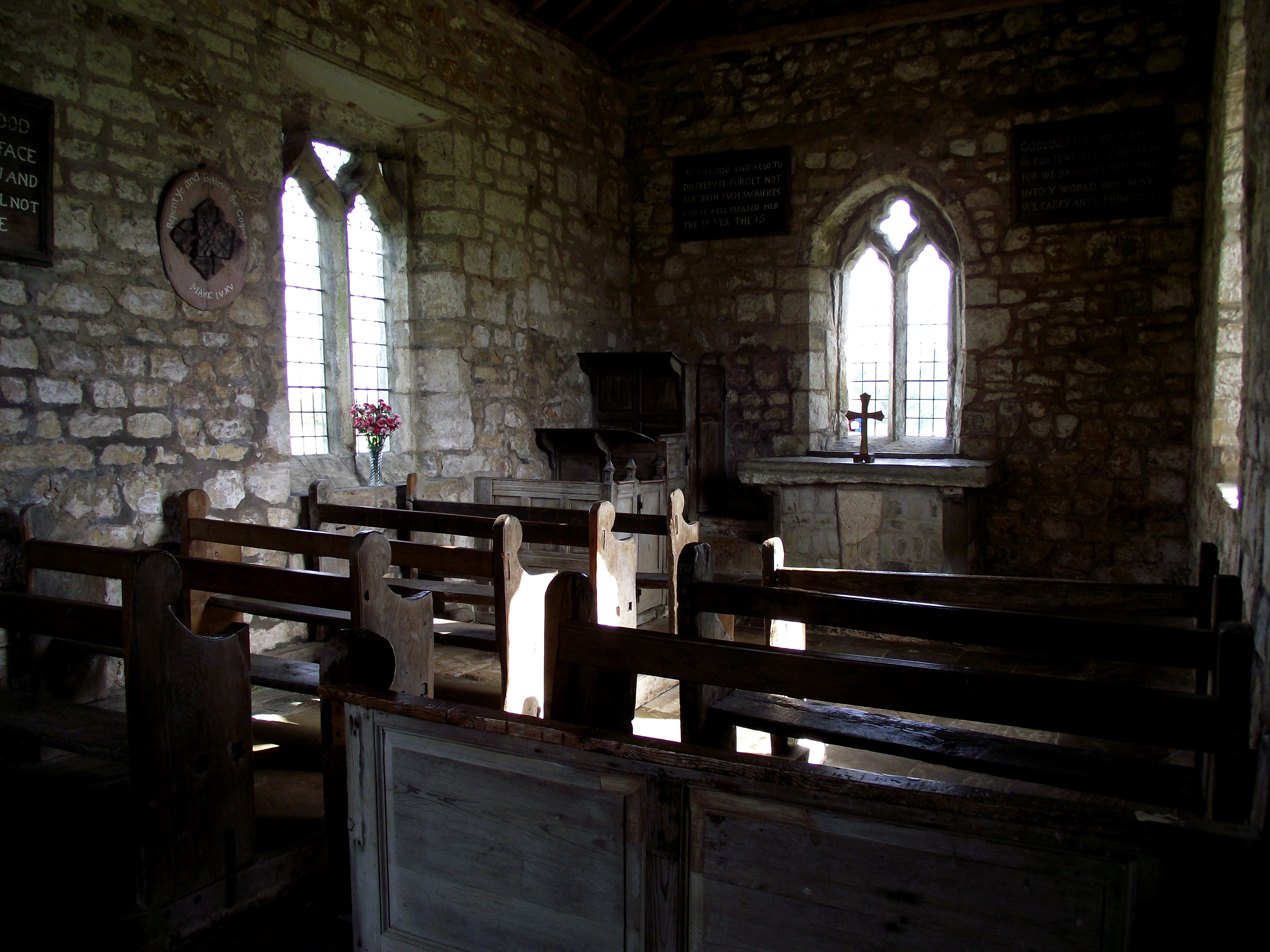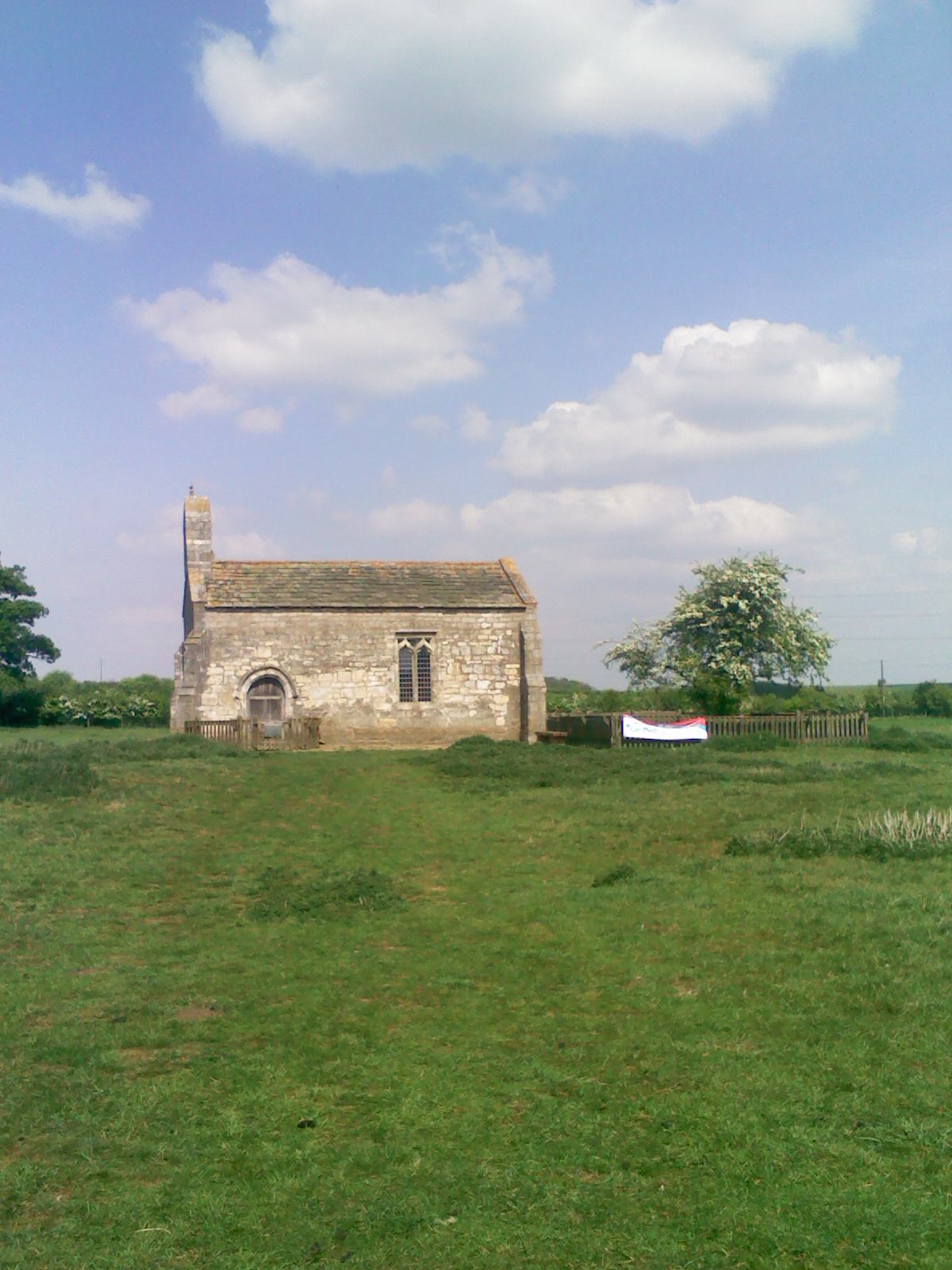|
About St Mary's Church, Lead
St Mary, Lead stands alone, set at some distance from the road. It is a small church, no more than 18ft (5.5m)
long, in the middle of a field that is normally home to grazing sheep.The building, a simple rectangle with a bell-cote at
the western end, is thought to date from the 14th century.We know, however, from records such as the Domesday survey of 1086,
that the area of Lead (the name derives from the Early English word ‘hleodu’) was populated before this date.
Therefore, it is possible that an earlier church structure might have existed although no mention of it was made in 1086.
Although St Mary’s has never served as a parish church, it is clear that it has been used as a private
chapel. If this is the case it is likely that the local noble family who were familiar with the church retained it for their
own use, and by doing so excluded those residents in the adjacent villages from using it. Alternatively, the building might
have offered hospitality and the opportunity for quiet contemplation and prayer to travellers making their way to or from
the larger medieval cities, particularly Leeds and York.
 |


